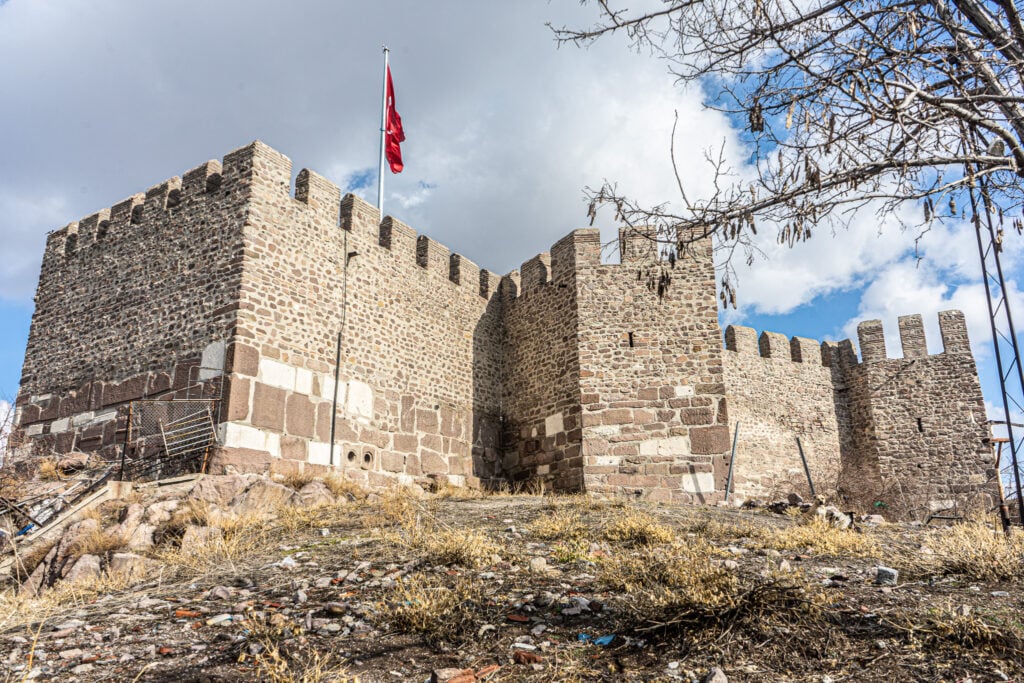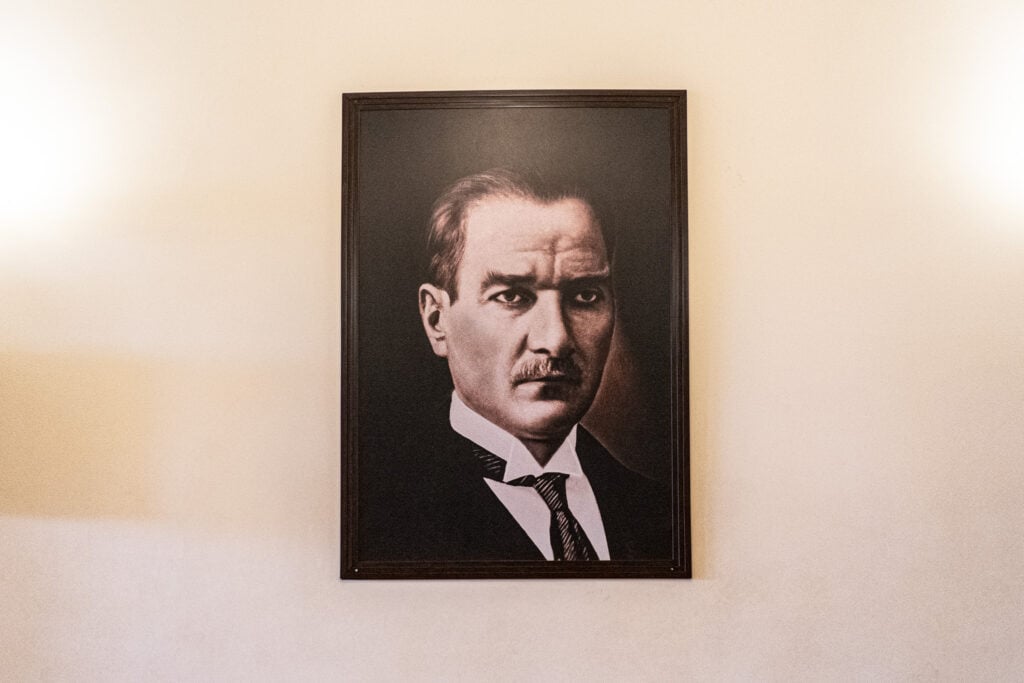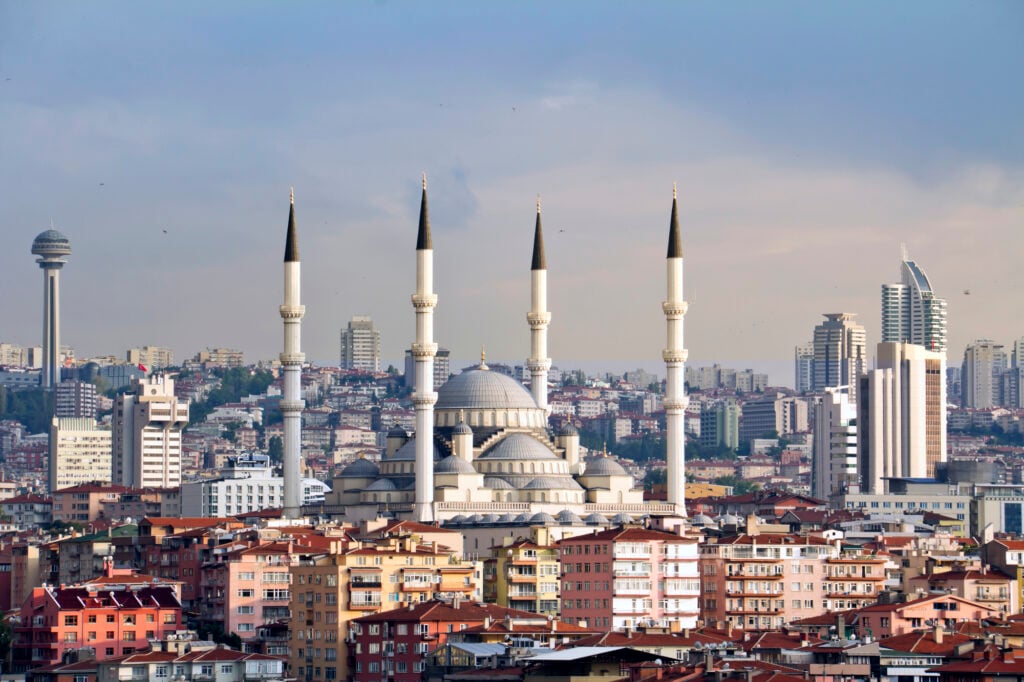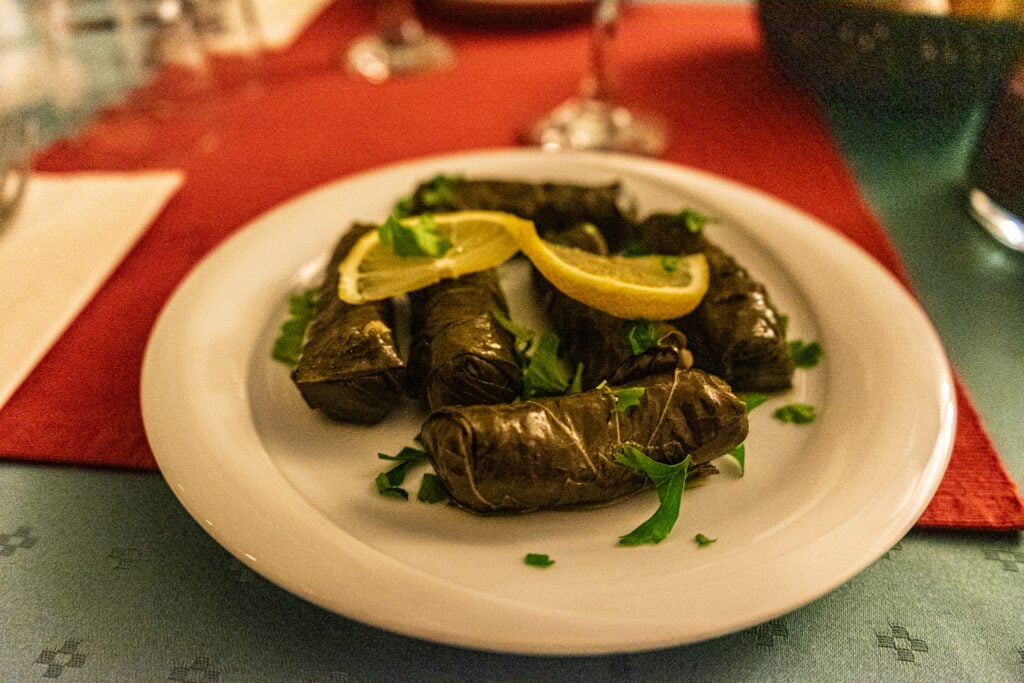From visiting Atatürk’s mausoleum to exploring ancient history at the Museum of Anatolian Civilizations, here are the best things to do in Ankara.
If I had a Turkish Lira for every time I’ve heard someone – be they travellers, fellow travel writers or tour guides – call Ankara a ‘Big village’, or a ‘City in a village’, then I’d be well on my way to retiring if the currency wasn’t so unstable. The roots of this common descriptor, which you’ll hear a lot can be traced back to 1923, when Atatürk declared that Ankara would be the capital of the new Republic of Turkey.
Distancing the new nation’s government from the ousted Ottomans who’d ruled from Istanbul, Atatürk chose a little-known settlement in the heart of Anatolia to become the centre of his new nation. But far from Ankara being a place of unimportance, it already had a long history stretching back millennia. Ankara was founded in the Bronze Age, it had grown to importance under Persian and Byzantine rule, and was far from being a backwater village when the Republic of Turkey was created.
But compared to Istanbul, Ankara was village-like. Despite the Ottoman houses and historic castle, Ankara had none of the infrastructure needed to run a nation. All of this had to be built from scratch, giving the capital the feel of a planned city constructed around its ancient nucleus. The core of that Old Quarter is still there to see, while the city’s long history can be explored at the Museum of Anatolian Civilizations. But with a modern population exceeding 5 million people, the Turkish capital is far from being a village today.
This is a contemporary Turkish metropolis, home to an expansive metro system that makes getting around a breeze, and yet still, its distance from Istanbul (it’s still four hours on the high-speed train) ensures that Ankara is little visited compared to the country’s most popular tourist destinations in the east. I’m here to tell you to skip the crowds, branch out into the heart of Anatolia, and give the Turkish capital a chance. You won’t regret it, and to help you plan your city break, here are the best things to do in Ankara.
Table of Contents
The best things to do in Ankara
I’ve now visited Ankara on two occasions. Like many travellers I’ve met, on both occasions, I was really only passing through on my way into Anatolia, but each visit made me want to stay longer and see more. Ankara is the capital, but it’s more than a planned city, and you’ll find it’s packed with mausoleums and museums, restaurants and bars, and cafes and parks.
I’d recommend at least three days to see all the sights in the city, which is just enough time for a city break getaway on your way to catch the Eastern Express east to Kars, or before you hop on a bus south to Cappadocia. Ankara is incredibly well connected (it’s the capital) and getting around the city itself is easy with the excellent metro system and very walkable streets.

1. Visit Anıtkabir (Atatürk’s Mausoleum)
Anıtkabir, located in the centre of Ankara, is the mausoleum of Mustafa Kemal Atatürk, the founder and first president of the Republic of Turkey. Completed in 1953, Anıtkabir stands as a symbol of modern Turkish identity and national pride. The structure blends both ancient and modern architectural elements, reflecting Ankara’s historical depth and progressive development as the nation’s capital. The complex includes the Hall of Honour, where Atatürk’s sarcophagus resides, surrounded by columns and reliefs depicting significant moments in Turkish history.
You can also explore the Peace Park, which surrounds the mausoleum with plants from various parts of Turkey and the world, symbolising global peace and unity. The site also houses a museum displaying Atatürk’s personal items, documents, and memorabilia, offering insights into his life and the founding of the Turkish Republic. Anıtkabir remains a poignant place for reflection and homage, attracting millions of visitors annually, the majority of them Turkish citizens.

Read more: Is Turkey in Europe or Asia? Everything You Need to Know.
2. Explore ancient history at the Museum of Anatolian Civilisations
The Museum of Anatolian Civilisations is a premier institution showcasing the exceptional cultural heritage of Anatolia. Established in 1921 and located in a restored Ottoman building in the Old Quarter of Ankara, the museum provides an extensive overview of the region’s history, from the Paleolithic era to the Roman period. Its well-curated exhibits feature artefacts from the multitude of ancient civilisations that have influenced the region, including the Hittites, Phrygians, Urartians and Assyrians.
Highlights include intricate Hittite reliefs, Bronze Age artefacts, and a comprehensive collection of Neolithic tools and sculptures discovered in Anatolian excavations. The museum’s layout is designed to guide visitors chronologically through the development of Anatolian cultures, offering a clear narrative of their evolution. Educational and engaging, the Museum of Anatolian Civilisations is a crucial destination for understanding the historical depth of modern Turkey, making it a must-visit for history enthusiasts in Ankara.
Read more: 14 Best Things to Do in Kars, Turkey
3. Wander through the Old Quarter (Ulus)
Ankara’s Old Quarter, known locally as Ulus, is the historic heart of Turkey’s capital, offering a glimpse into the Ottoman past. This area is home to narrow, winding streets and traditional Ottoman architecture, and among its historical sights are the Roman Temple of Augustus, the Hacı Bayram Mosque and the ancient Roman Baths, each portraying a different chapter of Ankara’s long history.
Ankara Castle, perched on a hill, provides panoramic views of the city and houses numerous artisan shops within its walls. The Ethnography Museum and the State Art and Sculpture Museum are located here, too, showcasing extensive collections of Turkish art and cultural artefacts. Ulus is a lively area, with local markets, traditional eateries, and shops selling souvenirs for you to take back home.

Read more: 15 Ancient Ruins You Can Visit in Turkey
4. Take in the views from Ankara Castle
Ankara Castle is perched on a strategic hilltop in the heart of the capital. A historic fortress with origins dating back to ancient times, the castle was initially constructed by the Hittites, and has since undergone extensive renovations and expansions under the Phrygians, Romans, Byzantines, Seljuks, and Ottomans, with each civilization adding their architectural imprint.
The castle’s robust walls and towers offer panoramic views of the city. Within its walls, the well-preserved citadel area is a maze of narrow, cobbled streets lined with traditional houses and overshadowed by the castle’s ramparts. A must-visit when you’re in Ankara, if only for the chance to see Ankara from its walls.

Read more: Turkey: How to Travel From Istanbul to Ankara
5. Delve into 20th century history at the Museum of the War of Independence
The Museum of the War of Independence is dedicated to preserving the history of Turkey’s struggle for independence. In the wake of the First World War. Housed in the first Turkish Grand National Assembly building, which was constructed in 1920, the museum offers a profound insight into the pivotal events that shaped modern Turkey.
Exhibits include personal belongings of Mustafa Kemal Atatürk and other key figures, documents, photographs, and artefacts from the period. The museum meticulously details the events from the late Ottoman era through the War of Independence (1919-1923), culminating in the establishment of the Republic of Turkey in 1923.
You can explore the assembly hall, where critical decisions were made, and view displays that narrate the military strategies, battles, and diplomatic efforts of the time. The museum provides a comprehensive and moving portrayal of the sacrifices and determination that led to Turkey’s independence, making it a significant cultural and historical landmark in Ankara.

Read more: 12 Things to Do in Van, Turkey
6. Discover Turkish culture inside the Ethnography Museum
Ankara’s Ethnography Museum is located in the city’s historic Ulus district, and it offers a fascinating glimpse into Turkish culture and heritage. Established in 1925 and housed in a building designed in the First National Architectural Movement style, the museum showcases an extensive collection of artefacts that reflect the diverse traditions and lifestyles of Anatolia.
The exhibits range from traditional clothing, textiles, and carpets to everyday household items, tools, and musical instruments. Notably, the museum also features a collection of calligraphy, woodwork, and metalwork, highlighting the intricate craftsmanship of Turkish artisans.
As you’d expect in Ankara, one of the museum’s most significant sections is dedicated to the life and legacy of Mustafa Kemal Atatürk, with a special room where his body lay in state for 15 years before being moved to Anıtkabir. Yes, Atatürk is inescapable when you’re visiting Ankara!

Read more: 14 Things to Do in Konya, Turkey
7. Dig into the ancient past at the Roman Baths
Ankara’s Roman Baths are a remarkable testament to the city’s ancient past. Constructed in the 3rd century AD during the reign of Emperor Caracalla, these baths were dedicated to Asclepius, the god of medicine and healing. The site includes the classic elements of a Roman bath complex: the frigidarium (cold room), tepidarium (warm room), and caldarium (hot room), along with various auxiliary rooms and courtyards.
Excavated in the 1930s, the baths reveal the sophisticated engineering and architectural prowess of the Romans, with intricate mosaic floors, well-preserved columns, and detailed layouts that illustrate the social and cultural importance of bathing in Roman society. Today, the site serves as an open-air museum, offering visitors a unique glimpse into the daily lives of ancient Romans and their surprisingly advanced public health practices.
Read more: 14 Things to Do in Erzurum, Turkey
8. See contemporary art at CerModern
CerModern is a contemporary art centre housed in a renovated railway workshop, blending industrial architecture with modern aesthetics. Opened in 2010, CerModern showcases a dynamic array of contemporary art exhibitions from both Turkish and international artists.
The centre features spacious galleries, a multi-purpose hall, and an outdoor sculpture garden, providing a versatile space for various artistic expressions. Regular exhibitions cover a broad spectrum of media, including painting, sculpture, photography, and digital art, reflecting the latest trends and innovative approaches in the art world.
Read more: The Eastern Express: How I Survived Turkey’s Epic 26-Hour Train Ride
9. Visit the State Art and Sculpture Museum
The State Art and Sculpture Museum is a cornerstone of Ankara’s cultural landscape. Opened in 1980, this museum is dedicated to Turkish art from the late Ottoman period to the present day. Housed in an elegant building designed in the First National Architectural Movement style that’s common across Ankara, the museum itself is a work of art.
The museum’s collection includes an impressive array of paintings, sculptures, and other artworks, highlighting the evolution of Turkish art over the centuries. Notable exhibits feature works by prominent Turkish artists such as Osman Hamdi Bey, İbrahim Çallı, and Abidin Dino, showcasing a blend of traditional influences and modernist trends.

10. Explore Islamic history at the Haci Bayram Mosque
The Haci Bayram Mosque is one of the city’s most significant religious and cultural landmarks. Built in the early 15th century, the mosque is named after Hacı Bayram-ı Veli, a prominent Sufi saint and founder of the Bayrami Sufi order. The mosque’s construction reflects the architectural style of the Seljuk and early Ottoman periods, featuring a striking combination of stone and brickwork.
Adjacent to the mosque is the tomb of Hacı Bayram-ı Veli, which attracts numerous visitors and pilgrims. The mosque complex also includes a well-maintained courtyard and surrounding gardens, offering a peaceful retreat within the bustling city. Over the centuries, the Haci Bayram Mosque has undergone several restorations, ensuring its preservation and continued use as a place of worship.

11. Uncover Turkey’s turbulent political past at the Ulucanlar Prison Museum
Ulucanlar Prison Museum offers a stark and poignant insight into Turkey’s turbulent political history. Originally established as a prison in 1925, it was operational until 2006 and witnessed the incarceration of numerous political prisoners, intellectuals, journalists, and activists. The museum was inaugurated in 2011 after extensive restoration, transforming the grim facility into a place of historical reflection and education.
You can explore the cells, punishment rooms, and, rather eerily, the execution chamber, each meticulously preserved to convey the harsh conditions endured by the inmates. Exhibits include personal belongings, letters, and photographs of former prisoners, providing a humanising glimpse into their lives and struggles. Surprisingly, the museum highlights the periods of political repression and coups that marked Turkey’s modern history.
Read more: How To Take The Ferry From Turkey To Northern Cyprus
12. See modern Islamic influences at the Kocatepe Mosque
Kocatepe Mosque is one of the largest and most iconic mosques in Turkey. Completed in 1987, its construction spanned over 20 years, combining classical Ottoman architecture with modern engineering. The mosque’s impressive structure features four towering minarets, each standing at 88 metres, and a massive central dome that dominates the Ankara skyline.
Inside, the mosque can accommodate up to 24,000 worshippers, with intricate designs adorning its vast prayer hall. The interior showcases beautiful marble, gold embellishments, and elaborate calligraphy, creating a serene and majestic atmosphere. The expansive courtyard and surrounding gardens offer additional space for reflection and community gatherings.

13. Dig into local specialties
By now you’re going to be hungry, so it’s time to dig into the best local specialties Ankara has to offer. Ankara’s cuisine is a delightful reflection of central Anatolia’s rich culinary traditions, with iconic dishes like ‘Ankara Tava’, a succulent lamb and rice dish cooked with aromatic spices and often served with roasted vegetables, guaranteed to sate your hunger.
Ankara’s cuisine typically features an array of Turkish dishes, including mezes (appetisers), ‘Yaprak Dolma’ (stuffed vineleaves), ‘Çerkez Tavuğu’ (Circassian chicken) and ‘Ezme’ (spicy tomato dip). Traditional desserts like ‘Etimek Tatlısı’, a syrup-soaked bread pudding, highlight the city’s penchant for sweet, indulgent treats. Of course, you’ll find classic kebab dishes all over Ankara, including the Iskandar Kebab.

14. Day trip to Hattusa
A day trip to Hattusa is a fascinating journey into ancient history. Located approximately 200 kilometres east of Ankara, Hattusa was the capital of the Hittite Empire during the late Bronze Age and is now a UNESCO World Heritage site. The trip takes around four hours by car, making it a feasible, but long day out from the capital.
Upon arrival, you can explore the impressive ruins of this once-mighty city, including its massive fortifications, royal residences, and religious temples. The Great Temple and the Lion Gate, adorned with intricate carvings, are among the highlights. The city’s unique rock-cut chamber, Yazılıkaya, serves as an open-air museum featuring remarkable reliefs of Hittite gods.

Map of the best things to do in Ankara
Here’s a map detailing the locations of the best things to do in Ankara:
There you have it, the best things to do in Ankara. When will you be visiting the Turkish capital?



Recent Comments